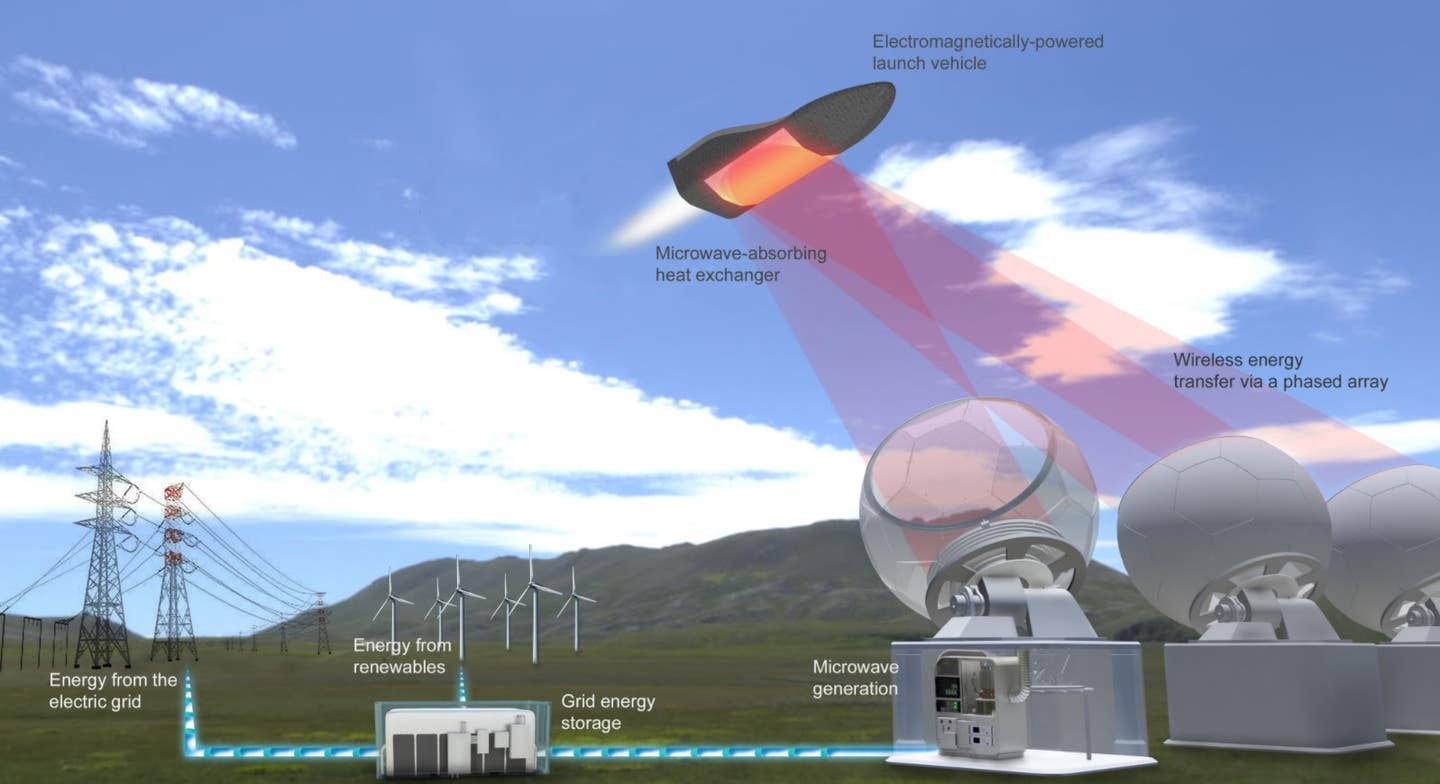Microwave-powered rocket propulsion gets a boost
Researchers led by the University of Tsukuba explore the possibility of launching rockets using a high-power beam of microwave radiation.

[August 2, 2021: University of Tsukuba]
Sending a rocket into space typically requires about 90% of the rocket’s initial weight to be fuel. This limitation could be overcome by wirelessly transmitting the needed power to the rocket through a beam of microwave radiation. A research team from Japan has investigated the viability of using such microwave-powered propulsion for real-world applications.
In a study published this month in the Journal of Spacecraft and Rockets, researchers led by the University of Tsukuba have demonstrated wireless power transmission via microwaves for a free-flying drone and determined the efficiency of this process.
Previous analyses of this kind were carried out decades ago and mostly considered microwaves of a low frequency (a few gigahertz; GHz). Given that the power transmission efficiency increases as the operating frequency is raised, the team behind this latest research used microwaves with a relatively high frequency (28 GHz). The team’s drone weighed roughly 0.4 kilograms and hovered for 30 seconds at a height of 0.8 meters above the source of the microwave beam.
Related Stories
“We used a sophisticated beam-tracking system to ensure that the drone received as much of the microwave power as possible,” says Kohei Shimamura, lead author of the study. “Moreover, to further increase the transmission efficiency, we carefully tuned the phase of the microwaves using an analog phase shifter that was synchronized with GPS units.”
The researchers measured the efficiencies of the power transfer through the beam (4%), the capture of microwaves by the drone (30%), the conversion of microwaves to electricity for propulsion (40%), and other relevant processes. Based on this information and an analytical formula, they calculated the overall power transmission efficiency in their experiment to be 0.43%. For comparison, in a previous study, the team measured the total transmission efficiency for a fixed-position (rather than free-flying) drone to be 60.1%.
“These results show that more work is needed to improve the transmission efficiency and thoroughly evaluate the feasibility of this propulsion approach for aircraft, spacecraft, and rockets,” explains Shimamura. “Future studies should also aim to refine the beam-tracking system and increase the transmission distance beyond that demonstrated in our experiment.”
Although microwave-powered rocket propulsion is still in its early stages, it could someday become a superior way to launch rockets into orbit given the high onboard-fuel demands of conventional propulsion techniques.
Like these kind of feel good stories? Get the Brighter Side of News' newsletter.
Tags: #New_Innovations, #Space_News, #Rockets, #Space_Travel, #The_Brighter_Side_of_News
Joshua Shavit
Science & Technology Writer | AI and Robotics Reporter
Joshua Shavit is a Los Angeles-based science and technology writer with a passion for exploring the breakthroughs shaping the future. As a contributor to The Brighter Side of News, he focuses on positive and transformative advancements in AI, technology, physics, engineering, robotics and space science. Joshua is currently working towards a Bachelor of Science in Business Administration at the University of California, Berkeley. He combines his academic background with a talent for storytelling, making complex scientific discoveries engaging and accessible. His work highlights the innovators behind the ideas, bringing readers closer to the people driving progress.



